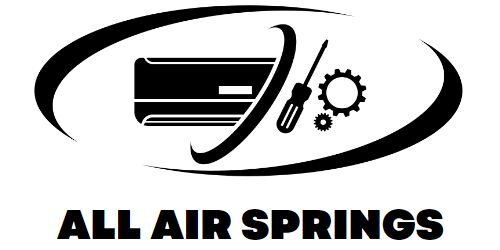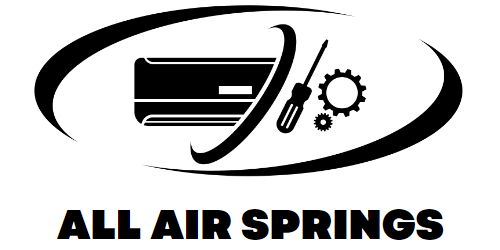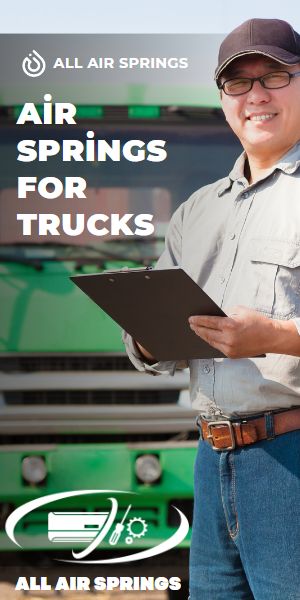
Complete Guide to Air Suspension Upgrades Benefits, Installation, and Maintenance
Introduction to Air Suspension Systems
Air suspension systems are a modern upgrade that enhances your vehicle’s ride quality and handling. Unlike traditional coil or leaf spring suspensions, which rely on metal springs to support the vehicle’s weight, air suspension uses airbags made of durable rubber and flexible material. These airbags are inflated and deflated to adjust the vehicle’s height and provide a smooth, adaptable ride.
One of the standout features of air suspension is its ability to adapt to varying road conditions, providing better comfort over rough terrains and uneven surfaces. The system works by using compressed air, which can be adjusted via a compressor and control system, allowing for a smooth and stable ride, regardless of the load or road surface.
Upgrading to air suspension can significantly enhance driving experience by reducing road vibrations, improving vehicle stability, and offering adjustable height for better clearance. Whether you’re looking to improve your car’s handling, gain better control while towing, or just enjoy a smoother drive, air suspension offers a world of benefits.
In the following sections, we’ll explore why upgrading to air suspension is worth considering, the components involved, how to select the right system, and more.
Why Upgrade to Air Suspension?
Upgrading to an air suspension system offers several compelling advantages that can transform your driving experience. One of the key benefits is the significant improvement in ride quality. Air suspension systems provide a smoother, more comfortable ride compared to traditional spring-based systems, effectively absorbing shocks and vibrations from uneven road surfaces. This results in a quieter, less jarring drive, especially on bumpy or rough terrains.
Another notable advantage is the ability to adjust the vehicle’s ride height. With air suspension, you can easily raise or lower the vehicle depending on the situation. For instance, lowering your car for better aerodynamics or raising it to clear obstacles on off-road trails is now possible with just the push of a button. This feature not only enhances comfort but also improves vehicle performance in different driving conditions.
Air suspension systems also offer better load management. Whether you’re towing a trailer, carrying heavy loads, or just driving with multiple passengers, the system automatically adjusts to maintain a level ride and optimal stability. This provides better control, reduces strain on the vehicle, and improves safety.
Ultimately, upgrading to air suspension offers improved comfort, performance, and versatility, making it a worthwhile investment for various types of vehicles, from luxury cars to trucks and RVs.
Understanding Air Suspension Components
To fully appreciate the benefits of air suspension, it’s important to understand its core components. An air suspension system is made up of several key parts that work together to provide a smooth and adjustable ride.
-
Air Springs
: The most critical component of the system, air springs replace traditional metal springs. Made of flexible rubber and other materials, these airbags are inflated or deflated to adjust the vehicle’s height and cushion road impacts. The air springs ensure that the ride remains comfortable, regardless of the terrain.
- Compressor: The compressor is responsible for supplying the system with compressed air. It takes air from the environment and compresses it to a high pressure before directing it to the air springs. The compressor’s size and power determine how quickly the system can adjust to changes in height.
- Air Tanks: These are reservoirs that store the compressed air produced by the compressor. They act as a buffer, ensuring that there is enough air for the system to function smoothly during adjustments.
- Valves: The valves control the flow of air into and out of the air springs. They are key to adjusting the vehicle’s height by regulating the pressure inside the air springs.
- Control System: This system allows the driver to adjust the ride height and manage the overall performance of the air suspension. The control system can be either manual or electronic, and it helps ensure that the suspension is optimized for comfort and performance.
Each of these components plays a vital role in delivering the benefits of air suspension, allowing for a customizable and smooth ride.
Signs You Need an Air Suspension Upgrade
Upgrading to an air suspension system can address a variety of issues that affect the comfort and performance of your vehicle. Here are some common signs that indicate it may be time for an upgrade:
-
Poor Ride Quality
: If you notice your vehicle feels bumpy, harsh, or unstable on rough roads, it could be a sign that your current suspension system is no longer providing adequate support. Air suspension systems offer a smoother, more comfortable ride by absorbing shocks and vibrations more effectively.
- Frequent Bottoming Out: Bottoming out occurs when the suspension system can’t handle the weight of the vehicle or the load it’s carrying, causing the vehicle to scrape or hit the ground. If you experience this frequently, it may indicate that your suspension is worn out and unable to maintain proper clearance.
- Sagging or Uneven Vehicle Height: A noticeable dip or uneven stance in your vehicle, especially when loaded or when carrying passengers, could suggest that the suspension system is struggling to distribute weight evenly. Air suspension can automatically adjust to maintain level height, regardless of load.
- Difficulty Towing or Hauling Heavy Loads: If you’re finding it difficult to tow a trailer or carry heavy loads without feeling instability or sway, upgrading to air suspension can improve load handling. Air suspension systems help balance the vehicle’s height and weight distribution, making towing smoother and safer.
- Visible Suspension Wear and Tear: If you notice that your suspension components, such as the springs or shock absorbers, are visibly worn out, leaking, or damaged, it’s time to consider a replacement. Air suspension systems can provide enhanced durability and reduce the risk of frequent repairs.
Upgrading to air suspension not only addresses these issues but can also offer better long-term performance and comfort. If you notice any of the above signs, it may be a good time to explore the benefits of an upgrade.
Choosing the Right Air Suspension System
When considering an air suspension upgrade, selecting the right system for your vehicle is crucial. There are several factors to consider to ensure that the system meets your needs and enhances your driving experience.
-
Vehicle Type
: The type of vehicle you drive plays a significant role in determining the best air suspension system for you. Luxury cars, trucks, SUVs, and RVs all have different suspension requirements. Make sure the system you choose is designed to handle the weight, size, and load capacity of your vehicle.
- Manual vs. Automatic Systems: Air suspension systems come in two primary types—manual and automatic. Manual systems require the driver to adjust the height and pressure manually, which can be ideal for those who want more control. On the other hand, automatic systems make real-time adjustments based on the load and road conditions, providing convenience and hands-free operation for a more effortless driving experience.
- Load Capacity: If you’re towing or carrying heavy loads, it’s essential to choose a system that offers the right load capacity. Look for air suspension systems that provide the ability to support additional weight without compromising ride quality or vehicle stability.
- Adjustability: One of the key advantages of air suspension is the ability to adjust the ride height. Some systems offer more flexibility, such as adjustable damping or ride stiffness, allowing you to fine-tune your suspension to your preferences. Think about how much adjustability you need to suit your driving style and conditions.
- Ease of Installation: Consider how easy or complicated the installation process might be. While some systems are designed for DIY installation, others may require professional installation for optimal performance. Be sure to choose a system that aligns with your level of experience or work with a trusted professional for installation.
- Budget: Air suspension systems can vary widely in cost. Keep in mind that while premium systems may come with advanced features and longer durability, there are also budget-friendly options that still provide a significant improvement over traditional suspension systems.
Choosing the right air suspension system is about balancing your needs, budget, and vehicle requirements. By considering these factors, you can select a system that enhances both performance and comfort for your specific driving needs.
Installation Process: What to Expect
Installing an air suspension system can be a transformative upgrade for your vehicle, but it’s important to know what to expect throughout the process. The installation can vary depending on the system you choose and whether you’re doing it yourself or hiring a professional.
-
Preparation and Planning
: Before starting, ensure that you have all the necessary tools and parts. The installation may require basic mechanical knowledge, so it’s crucial to familiarize yourself with the system’s components and the steps involved. If you’re opting for a professional installation, schedule an appointment and make sure the workshop is experienced with air suspension systems.
- Removing the Old Suspension: The first step in installation typically involves removing the existing suspension system, including coil springs or shock absorbers. This process may require lifting the vehicle and supporting it securely to remove the old components safely.
- Installing Air Springs and Components: Once the old suspension is removed, the new air springs are installed. This includes mounting the airbags, connecting them to the air lines, and securing the compressor and air tanks in place. During this stage, you’ll also need to set up the control system, which may involve running wires or setting up a control panel inside the vehicle.
- Connecting Air Lines and Wiring: The air suspension system relies on a network of air lines and electrical wiring. These must be properly routed and connected to ensure the system works as intended. The wiring will connect the control system to the compressor, valves, and sensors, while the air lines carry compressed air to the air springs.
- Testing and Adjustments: After installation, it’s time to test the system. This involves inflating the airbags, checking for leaks, and verifying that the vehicle’s height adjusts correctly. Adjustments may need to be made to ensure proper ride height, air pressure, and ride quality.
- Alignment and Final Checks: It’s important to perform a final alignment check to ensure that the vehicle is level and that the suspension is functioning smoothly. A test drive should also be performed to verify the system’s performance on the road.
While installing air suspension systems can be complex, working with a professional ensures optimal results and avoids potential issues. Whether you choose to install it yourself or seek help from a specialist, understanding the installation process helps ensure that your upgrade is done properly and safely.
Maintenance and Care for Air Suspension Systems
To ensure that your air suspension system continues to perform optimally, regular maintenance and care are essential. Unlike traditional suspension systems, air suspensions rely on air and rubber components, which require a bit more attention to keep them in good condition. Here are some tips for maintaining your system:
-
Check for Leaks
: One of the most common issues with air suspension systems is air leaks. Over time, the rubber airbags or air lines can develop small cracks or punctures. It’s important to regularly inspect all air components for signs of leakage. You can also listen for hissing sounds, which can indicate a leak in the system. If any leaks are detected, repair or replacement is needed.
- Inspect the Compressor: The compressor is a critical component of the air suspension system. Ensure that it’s functioning properly by listening for unusual noises or checking for irregular operation. If the compressor isn’t providing adequate air pressure or is making strange sounds, it may be time to replace it. Keeping the compressor clean and free from debris also helps extend its lifespan.
- Monitor Air Pressure: Maintaining the correct air pressure in your airbags is essential for optimal performance. Over or under-inflated air springs can result in a rough ride or compromised load capacity. Most modern air suspension systems come with electronic sensors that monitor air pressure, but it’s still a good idea to manually check the pressure from time to time.
- Regularly Clean the System: Dirt, dust, and road grime can accumulate on the air suspension components, especially the air springs and control valves. Periodic cleaning will help prevent any build-up that could lead to system malfunctions. Use a mild soap and water solution to clean components, but avoid harsh chemicals that could damage the rubber or plastic parts.
- Replace Worn Components: Like any suspension system, air suspension components wear out over time. Keep an eye on the condition of the airbags, valves, and other key parts. If any parts appear damaged, cracked, or excessively worn, replacing them early can prevent further damage and avoid costly repairs.
- Check Electrical Components: If you have an electronic control system, check the wiring and connections periodically. Loose or damaged wiring can disrupt the functioning of the system. Make sure the control module is working properly and that the connections are secure.
By following these maintenance tips, you can ensure that your air suspension system continues to deliver a smooth, comfortable ride for years to come. Regular checks and minor repairs can go a long way in preserving the performance and reliability of the system.
Is an Air Suspension Upgrade Worth It?
Upgrading to an air suspension system offers a range of benefits that can dramatically enhance your vehicle’s ride quality, performance, and versatility. With the ability to adjust ride height, improve load handling, and offer a smoother, more comfortable ride, air suspension systems provide both functional and aesthetic advantages for a wide range of vehicles, from luxury cars to trucks and RVs.
If you’re dealing with poor ride quality, sagging, or difficulties towing heavy loads, air suspension can provide a noticeable improvement. Not only does it offer better comfort by absorbing road shocks and vibrations, but it also gives you the ability to tailor your vehicle’s ride height, ensuring better clearance on rough terrain and improved aerodynamics on highways.
However, it’s important to consider the cost, installation complexity, and maintenance requirements before making the switch. Air suspension systems tend to be more expensive than traditional suspension options, and while installation can be a bit more involved, working with a professional can ensure that everything is set up correctly. Additionally, regular maintenance is necessary to keep the system functioning smoothly.
Ultimately, if you prioritize comfort, control, and performance, an air suspension upgrade is well worth the investment. Whether you’re enhancing a daily driver or improving the functionality of a work vehicle, the benefits of air suspension can be significant. If you’re ready for the upgrade, consulting with a professional to choose the right system and ensure proper installation will help you enjoy a better driving experience for years to come.
For detailed information, you can contact us at torqueusa.com


